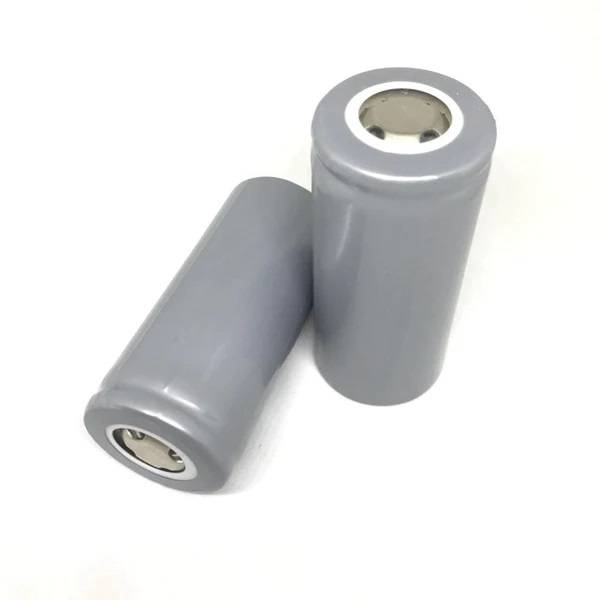Solid-state batteries represent a significant advancement in energy storage technology, offering numerous benefits alongside some challenges. They utilize solid electrolytes instead of liquid ones, which enhances safety and performance but also presents hurdles in terms of cost and manufacturing scalability.
What Are Solid-State Batteries and Their Key Features?
Solid-state batteries are energy storage devices that use a solid electrolyte to facilitate ion movement between the anode and cathode during charge and discharge cycles. Key features include:
- Solid Electrolyte: Unlike traditional batteries that use liquid or gel electrolytes, solid-state batteries employ materials such as ceramics or polymers.
- Higher Energy Density: They can store more energy in a smaller volume, making them ideal for applications requiring compact power sources.
- Longer Lifespan: These batteries typically endure more charge cycles before degradation occurs.
Key Features Chart: Components of Solid-State Batteries
| Component | Description |
|---|---|
| Anode | Made from lithium or other suitable materials |
| Cathode | Often composed of lithium metal oxides |
| Electrolyte | A solid material that conducts ions |
Why Are Solid-State Batteries Viewed as Safer Options?
Safety is a major advantage of solid-state batteries due to several factors:
- Reduced Fire Risk: The absence of flammable liquid electrolytes significantly lowers the risk of fires and explosions.
- Thermal Stability: Solid electrolytes can operate safely at higher temperatures without degrading.
- Structural Integrity: The solid form reduces the likelihood of leaks or ruptures, enhancing overall safety.
These attributes make solid-state batteries particularly appealing for electric vehicles and consumer electronics.
What Advantages Do Solid-State Batteries Offer in Energy Storage?
Solid-state batteries provide several advantages over traditional battery technologies:
- Higher Energy Density: They can achieve energy densities of 300-500 Wh/kg, allowing for longer usage times without increasing size or weight.
- Extended Lifespan: With fewer degradation issues, they often last longer than lithium-ion batteries, reducing replacement costs.
- Faster Charging Times: Enhanced designs allow for quicker charging without compromising safety.
These benefits position solid-state batteries as a leading choice for future energy storage solutions.
Advantages Comparison Chart: Solid-State vs. Lithium-Ion
| Feature | Solid-State Batteries | Lithium-Ion Batteries |
|---|---|---|
| Energy Density | Higher (300-500 Wh/kg) | Lower (150-250 Wh/kg) |
| Lifespan | Longer (2000+ cycles) | Shorter (500-1500 cycles) |
| Charging Time | Faster | Moderate |
| Safety | Higher | Moderate |
What Challenges and Disadvantages Are Associated with Solid-State Batteries?
Despite their advantages, solid-state batteries face several challenges:
- High Production Costs: Current manufacturing processes are expensive, making them less competitive with established technologies.
- Material Limitations: Finding suitable materials that can conduct ions effectively while remaining stable is crucial.
- Scalability Issues: Developing scalable production processes is essential to meet market demands.
Addressing these challenges is critical for integrating solid-state technology into mainstream applications.
How Do Solid-State Batteries Compare to Traditional Lithium-Ion Batteries?
When comparing solid-state batteries to lithium-ion batteries, several differences emerge:
- Safety: Solid-state batteries are generally safer due to their non-flammable electrolytes.
- Performance: They offer higher energy density and longer lifespans compared to traditional lithium-ion batteries.
- Cost: Currently, lithium-ion batteries are more cost-effective due to established manufacturing processes.
Overall, while solid-state batteries show great promise, they still need to overcome cost and scalability challenges to compete effectively with lithium-ion technology.
What Is the Future Potential for Solid-State Battery Technology?
The future of solid-state battery technology looks promising as research continues to advance:
- Increased Investment: Major companies are investing heavily in developing solid-state technology, aiming for commercial viability by 2025.
- Innovative Research: Ongoing research into new materials and manufacturing techniques is expected to enhance performance and reduce costs.
- Market Growth: As electric vehicles and renewable energy solutions become more prevalent, the demand for solid-state batteries is likely to rise significantly.
This trajectory suggests that solid-state batteries could play a critical role in the future of energy storage solutions.
Industrial News
Recent advancements in solid-state battery technology have garnered attention from major automotive manufacturers like Toyota and Volkswagen, which are investing heavily in research and development. These companies aim to integrate solid-state technology into their electric vehicles by 2025, promising enhanced performance and safety features. Additionally, regulatory support is increasing globally to promote cleaner battery technologies.
Redway Expert Insights
“Solid-state batteries represent a transformative leap forward in energy storage technology,” states Dr. Emily Carter, an expert in battery innovation. “Their ability to enhance safety while providing superior performance makes them essential for the future of electric mobility and renewable energy integration.”
FAQ Section
Q1: What is a solid-state battery?
A1: A solid-state battery uses a solid electrolyte instead of liquid or gel electrolytes, enhancing safety and energy density while reducing fire risks.Q2: What are the main advantages of solid-state batteries?
A2: They offer higher energy density, longer lifespan, faster charging times, and improved safety compared to traditional lithium-ion batteries.Q3: What challenges do solid-state batteries face?
A3: Key challenges include high production costs, material limitations, and scalability issues that need addressing for widespread adoption.



